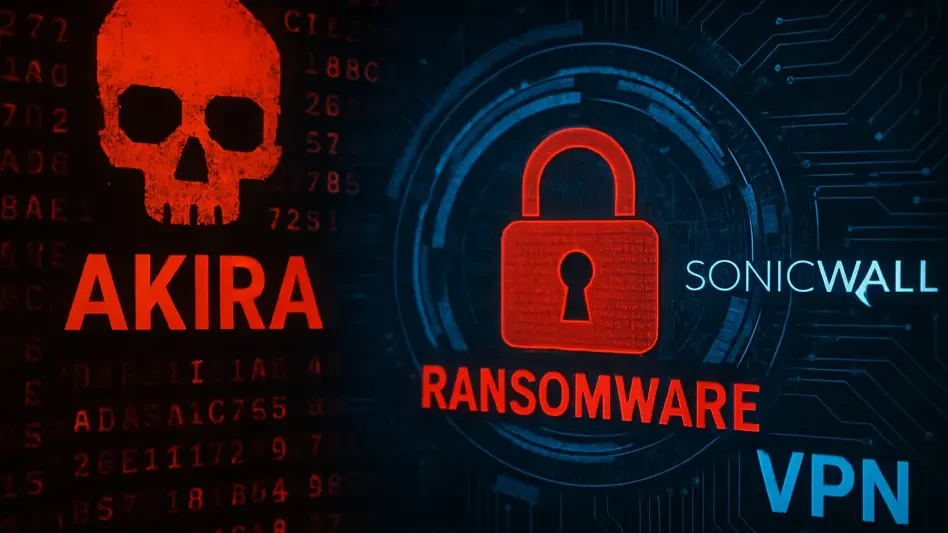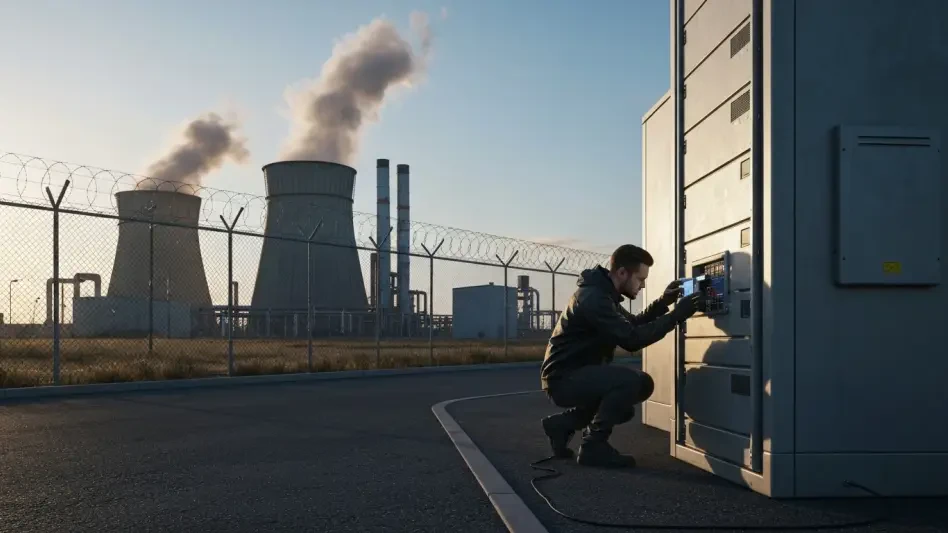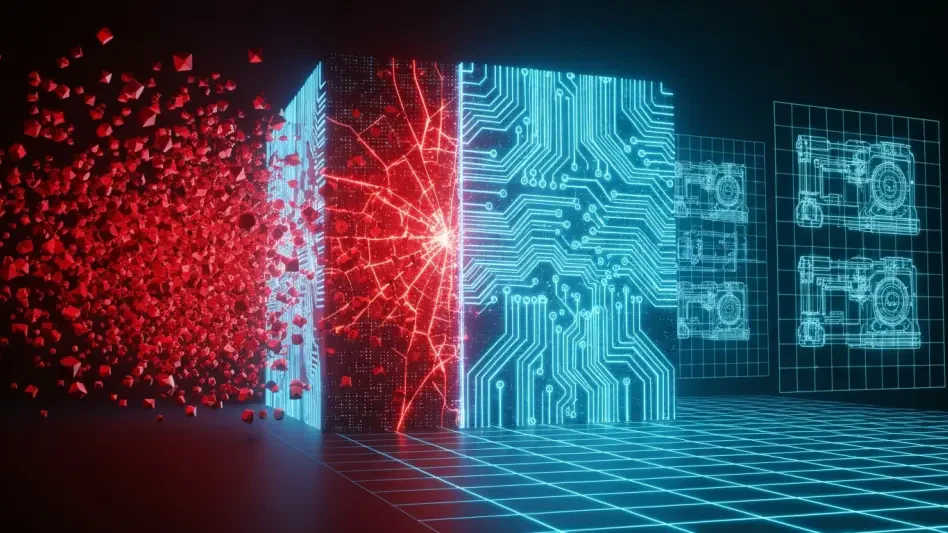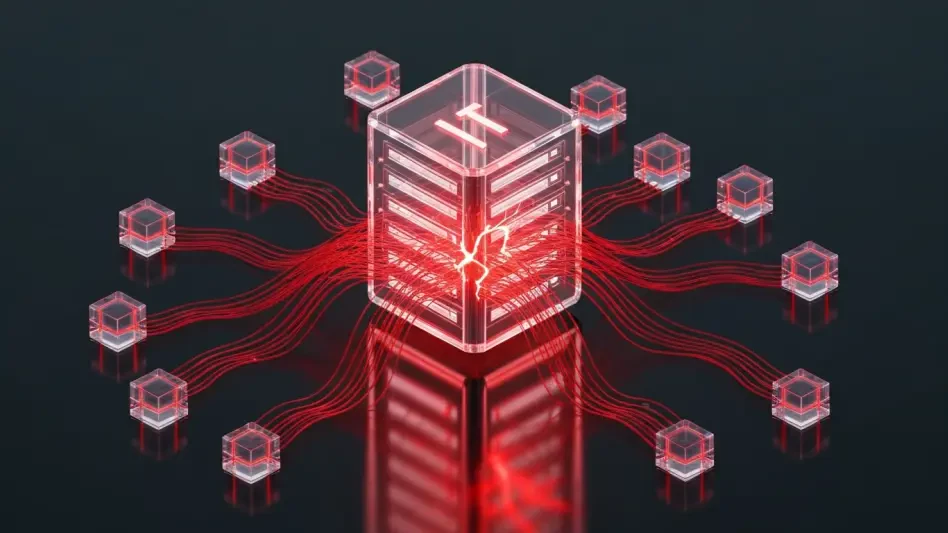What happens when a cybersecurity patch, meant to seal a dangerous gap, becomes the very target of ruthless hackers? In 2025, the cybersecurity community is grappling with a chilling reality: the Akira ransomware group is exploiting a previously patched flaw in SonicWall SSL VPNs, turning a resolved issue into a persistent nightmare. This isn’t just a minor glitch—it’s a stark warning about the fragility of digital defenses in an era where remote access is vital for business operations. The question looms: how can a flaw fixed in 2024 still haunt organizations today?
The significance of this breach cannot be overstated. SonicWall SSL VPNs are trusted by countless enterprises to secure remote connections, yet the Akira group’s attacks reveal a critical gap between patching a vulnerability and truly securing a system. With ransomware attacks costing businesses billions annually—$20 billion globally in 2023 alone, according to Statista—the stakes are sky-high. This story isn’t just about a single flaw; it’s about the broader challenge of staying ahead of cybercriminals who evolve faster than defenses can adapt.
Unmasking a Stealthy Threat: Akira’s Latest Move Against SonicWall VPNs
Deep in the digital shadows, the Akira ransomware group has struck with surgical precision, targeting SonicWall SSL VPNs in a way that defies expectations. Reports indicate that these attackers are leveraging a critical vulnerability, patched in 2024, to breach Gen 7 and newer devices. What makes this alarming is not the novelty of the exploit, but the audacity to exploit a known issue many believed was history.
This attack serves as a harsh reminder that cybersecurity is not a one-and-done fix. Even with patches available, the window of opportunity for hackers remains open as long as systems go unupdated or configurations falter. The Akira group’s focus on this flaw exposes a dangerous complacency in some organizations, highlighting the need for relentless vigilance in a landscape where threats never truly disappear.
Why SonicWall VPN Flaws Matter in Today’s Threat Landscape
SonicWall SSL VPNs stand as a lifeline for businesses navigating the complexities of remote work, securing connections for employees across the globe. However, any crack in this armor—be it a flaw or a misstep in management—can invite catastrophic consequences. With ransomware incidents spiking by 37% from 2025 to early projections for 2026, as per industry estimates, the importance of airtight VPN security has never been clearer.
The implications extend beyond mere technical failures. A breach in a VPN system can compromise sensitive data, disrupt operations, and erode trust with clients and partners. For many companies, the fallout from such an incident isn’t just financial—it’s a blow to reputation that can take years to rebuild, underscoring why flaws like these demand immediate attention.
This isn’t an isolated concern but part of a broader pattern where cybercriminals target infrastructure critical to daily operations. The reliance on VPNs in hybrid work models amplifies the risk, making it imperative for organizations to treat every vulnerability as a potential gateway to disaster, no matter how small or previously addressed it may seem.
Breaking Down the Akira Attack on SonicWall SSL VPNs
At the heart of the Akira group’s campaign lies a critical vulnerability in SonicWall Gen 7 devices, identified as CVE-2024-40766 with a severity rating of 9.8. Patched earlier in 2024, this flaw allowed unauthorized access, often exacerbated by issues like password reuse during migrations from older Gen 6 systems. Despite the fix, some organizations remain exposed due to delayed updates or oversight.
The scale of the impact, while limited, still stings. SonicWall’s advisory in 2024 noted fewer than 40 reported incidents, a small fraction of their user base, yet each case represents a potential goldmine for attackers seeking ransom or data theft. The ripple effect of even a single breach can be devastating, with costs averaging $4.5 million per ransomware incident, according to IBM’s 2025 data breach report.
What sets this attack apart is its reliance on human error rather than groundbreaking hacking techniques. Experts point out that unpatched systems and lax security practices are the real culprits, narrowing the risk to those who neglect basic hygiene. This incident paints a clear picture: even resolved vulnerabilities can bite back if organizations fail to act decisively.
Expert Insights Shed Light on Limiting the Damage
Amid the storm of concern, security experts offer a glimmer of hope by reframing the nature of this threat. Nic Adams, co-founder and CEO of 0rcus, emphasized, “The presence of a patch transforms this from an uncontrollable systemic risk into a manageable issue with a clear fix.” His perspective shifts the focus from panic to practicality, urging companies to prioritize action over fear.
Adams also highlighted that the exposure isn’t universal but tied to specific failures—namely, unpatched systems and insecure setups. This narrows the attack’s scope, suggesting that organizations with robust update protocols are largely safe. The correlation with password reuse during system migrations further points to operational missteps as the true weak link, not the technology itself.
Real-world patterns reinforce this analysis. The Akira group’s strategy often exploits human oversight rather than novel exploits, a tactic seen in numerous ransomware campaigns. This insight drives home a crucial lesson: while technology can be fortified, the human element remains a persistent vulnerability that demands equal focus in any defense strategy.
Actionable Steps to Protect SonicWall VPNs from Akira Threats
Facing a threat like Akira requires more than awareness—it demands concrete action. SonicWall and cybersecurity specialists have laid out a roadmap to shield systems from CVE-2024-40766 and similar risks. First, updating to firmware version 7.3.0 is non-negotiable, as it bolsters defenses against brute force attacks and enhances multi-factor authentication controls.
Beyond updates, resetting passwords for all local user accounts with SSL VPN access is critical, especially for those migrated from Gen 6 to Gen 7 systems. This step eliminates risks tied to outdated or reused credentials. Additionally, adopting best practices such as enabling botnet protection, Geo-IP filtering, and removing inactive accounts can significantly shrink the attack surface.
Finally, vigilance must become second nature. Enforcing strong password policies, mandating multi-factor authentication, and monitoring for unusual activity are essential habits. Regular patch management ensures no known flaws linger, turning a potential weakness into a fortified barrier against ransomware groups like Akira. These measures collectively form a robust defense, tailored to address both technical and human vulnerabilities.
Looking back, the Akira ransomware group’s exploitation of a patched SonicWall VPN flaw served as a sobering lesson for the cybersecurity landscape in 2025. It exposed how even resolved issues could resurface as lethal threats when diligence faltered. Organizations that acted swiftly to update systems and tighten security protocols managed to dodge severe damage, but the incident left an indelible mark on the importance of proactive defense.
Reflecting on this episode, the path forward demanded a shift in mindset—treating every patch as only the first step in a continuous battle. Companies were urged to invest in automated patch management tools to close gaps faster and to train staff on recognizing phishing attempts that often preceded such attacks. As the digital realm grew more treacherous, fostering a culture of readiness became the ultimate safeguard against the next inevitable threat.








